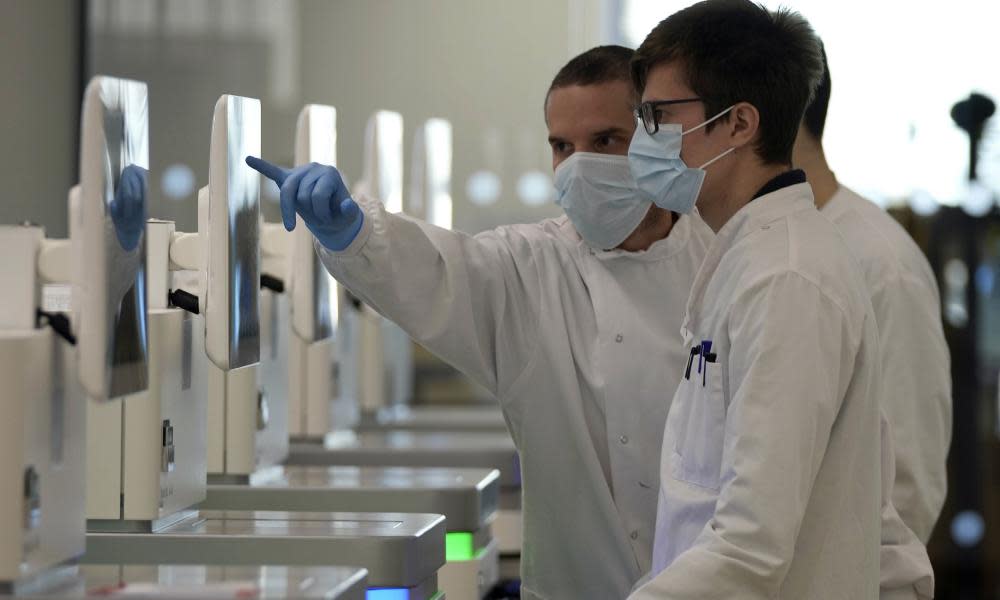Rise in Covid cases in England as reinfections included for first time

Previously people were only included in statistics once even if they had caught Covid multiple times
Another 92,000 Covid cases were reported for England on Monday, a steep rise on the day before, after reinfections were included in the statistics for the first time.
Previously daily Covid case figures – which reflect the number of new infections picked up by testing – did not include reinfections for England, Scotland or Northern Ireland, although figures for Wales did, provided the positive tests were more than 42 days apart. In other words, most people were only counted once even if they had caught Covid multiple times.
However, as the pandemic has gone on, the absence of reinfections in case data led to concerns, with experts noting that a previous infection provides little protection against Omicron, while – two years into the pandemic – there is a bigger pool of people who have had Covid at least once before.
Scientists noted that it was also important to include reinfections in order to understand the dynamics of the spread of immune-evasive variants that emerge, while it also sheds light on why some individuals may get infected over and over.
“This is likely to be a combination of risk – due to exposure – plus inherent likelihood of becoming infected, once exposed,” said Prof Rowland Kao, an epidemiologist at the University of Edinburgh. “We need to know these things in order to better target interventions of various sorts – how important, for example, particularly workplaces are likely to be, and how some individuals are therefore going to be exposed to more risk.”
Related: Covid reinfection: how likely are you to catch virus multiple times?
The new approach means that reinfections will be now included in daily Covid case figures for England and Northern Ireland, with such episodes defined as a positive specimen at least 90 days after the last one – a gap that captures the majority of reinfections but ensures those who simply shed the virus for longer after an infection are excluded from the data.
While data from the UK Health Security Agency suggests some reinfections may occur in a shorter time period, this is a relatively small proportion of potential reinfections.
The Guardian understands data for cases in Scotland will also include reinfections in the coming weeks, while data for cases Wales will switch in the coming weeks to using the 90-day 90-day episode length.
Under the current, mixed definitions in use, 92,368 new Covid cases were reported for the UK on Monday, up from 69,007 the day before, with 81,720 reported for England alone compared with 59,559 on Sunday before reinfections were included.
The Guardian understands reinfections were not originally included in the daily case data across all the countries of the UK because at the beginning of the pandemic it was unclear whether they occurred and, if reinfections did happen, what the interval between infections was. While reinfection figures have since been tracked by public health bodies, and released in reports, the daily case figures have not – until now – included such episodes.
While the inclusion of reinfections means the case-fatality risk – the proportion of people reported to be diagnosed with Covid who go on to die – will fall, Prof Sir David Spiegelhalter, a statistician at the University of Cambridge, cautioned the measure remains problematic.
“We have always known that the daily number of reported cases was a substantial undercount of the actual number of infections – the ONS Covid Infection Survey shows that we have to at least double the daily count,” he said.
“Including reinfections will be an improvement, and will reduce the apparent case-fatality rate, but nobody should have taken this very seriously anyway. The case-fatality ratio is inevitably an overestimate of what is the better measure – the infection fatality ratio, ie the proportion of those who are infected who die, whether or not they become confirmed cases.”

 Yahoo News
Yahoo News 
